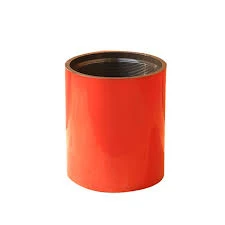- Afrikaans
- Albanian
- Amharic
- Arabic
- Armenian
- Azerbaijani
- Basque
- Belarusian
- Bengali
- Bosnian
- Bulgarian
- Catalan
- Cebuano
- Corsican
- Croatian
- Czech
- Danish
- Dutch
- English
- Esperanto
- Estonian
- Finnish
- French
- Frisian
- Galician
- Georgian
- German
- Greek
- Gujarati
- Haitian Creole
- hausa
- hawaiian
- Hebrew
- Hindi
- Miao
- Hungarian
- Icelandic
- igbo
- Indonesian
- irish
- Italian
- Japanese
- Javanese
- Kannada
- kazakh
- Khmer
- Rwandese
- Korean
- Kurdish
- Kyrgyz
- Lao
- Latin
- Latvian
- Lithuanian
- Luxembourgish
- Macedonian
- Malgashi
- Malay
- Malayalam
- Maltese
- Maori
- Marathi
- Mongolian
- Myanmar
- Nepali
- Norwegian
- Norwegian
- Occitan
- Pashto
- Persian
- Polish
- Portuguese
- Punjabi
- Romanian
- Russian
- Samoan
- Scottish Gaelic
- Serbian
- Sesotho
- Shona
- Sindhi
- Sinhala
- Slovak
- Slovenian
- Somali
- Spanish
- Sundanese
- Swahili
- Swedish
- Tagalog
- Tajik
- Tamil
- Tatar
- Telugu
- Thai
- Turkish
- Turkmen
- Ukrainian
- Urdu
- Uighur
- Uzbek
- Vietnamese
- Welsh
- Bantu
- Yiddish
- Yoruba
- Zulu
coupling for tubing
Coupling for Tubing An Essential Component in Fluid Transportation
In many industries, particularly oil and gas, the effective transportation of fluids is paramount. One of the critical components that facilitates this process is the coupling used for tubing. Couplings play a significant role in connecting sections of tubing, ensuring that fluids flow smoothly and efficiently from one point to another. This article explores the importance of couplings in tubing systems, the types available, and considerations for their selection.
Understanding Couplings
At its core, a coupling is a mechanical device that joins two pieces of tubing together. This connection can handle various pressures and temperatures, depending on the application. In the context of oil and gas operations, coupling systems must endure harsh environmental conditions, including extreme pressures and temperatures that can lead to equipment failure.
Moreover, the integrity of these couplings is critical. Any failure can lead to leaks, which not only hampers efficiency but can also pose significant safety risks, including fire hazards and environmental contamination. Therefore, the selection of appropriate couplings is not something to take lightly; it requires a thorough understanding of the materials, design, and operational conditions.
Types of Couplings
There are several types of couplings used in tubing applications, each designed for specific requirements
1. Threaded Couplings These are perhaps the most common; they feature internal or external threads that effectively join sections of tubing. Their design allows for easy assembly and disassembly, which can be beneficial during maintenance or repairs. However, ensuring a proper seal is critical to avoid leaks.
2. Welded Couplings These couplings are permanently attached to the tubing by welding. While they provide a robust connection that can withstand high pressures, the permanent nature means that disassembly requires cutting, which can be time-consuming and costly.
3. Flanged Couplings This type involves flanges that are bolted together. Flanged couplings are particularly useful in situations where maintenance might be necessary, as they allow for easy access to the connected tubing.
coupling for tubing

4. Compression Couplings These couplings use a mechanical compression method to create a seal between the tubing ends. They are ideal for applications that require ease of installation and frequent disassembly.
Factors to Consider When Choosing Couplings
When selecting a coupling for tubing, several factors must be taken into account
1. Material Compatibility The material of the coupling must be compatible with the fluids being transported and the environmental conditions. For instance, corrosive substances often require couplings made from resistant materials such as stainless steel or specialized alloys.
2. Pressure and Temperature Ratings It is critical to select couplings that can handle the expected pressure and temperature ranges of the application. Manufacturers typically provide specifications regarding the limits of their products.
3. Size and Compatibility Couplings must fit the dimensions of the tubing being used. Ensure that the diameter and length meet the necessary specifications to prevent misalignment and potential leaks.
4. Assembly and Maintenance Consider how often the system will need to be maintained. If frequent access is required, couplings that allow for easy disassembly, such as flanged or threaded options, might be ideal.
5. Regulatory Compliance Depending on the industry and region, specific standards and regulations govern the use of couplings for tubing. It is crucial to ensure that all components comply with these regulations to avoid legal complications and ensure safety.
Conclusion
Couplings are vital components in any tubing system, particularly in industries where fluid transportation is essential. The right coupling not only ensures efficiency but also promotes safety and reliability. With a variety of options available, it’s important to consider the specific needs of the application when choosing couplings. Ultimately, investing time and resources into selecting appropriate couplings can lead to more efficient operations, reduced downtime, and improved safety outcomes in the long term.
-
Tubing Pup Joints: Essential Components for Oil and Gas OperationsNewsJul.10,2025
-
Pup Joints: Essential Components for Reliable Drilling OperationsNewsJul.10,2025
-
Pipe Couplings: Connecting Your World EfficientlyNewsJul.10,2025
-
Mastering Oilfield Operations with Quality Tubing and CasingNewsJul.10,2025
-
High-Quality Casing Couplings for Every NeedNewsJul.10,2025
-
Boost Your Drilling Efficiency with Premium Crossover Tools & Seating NipplesNewsJul.10,2025







